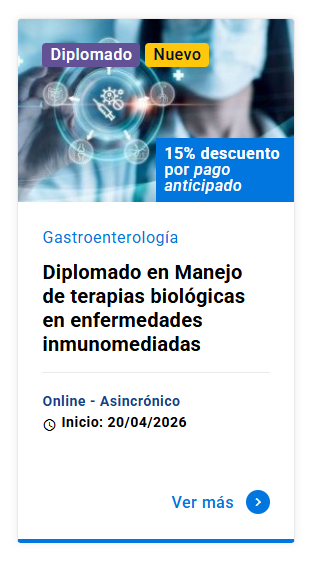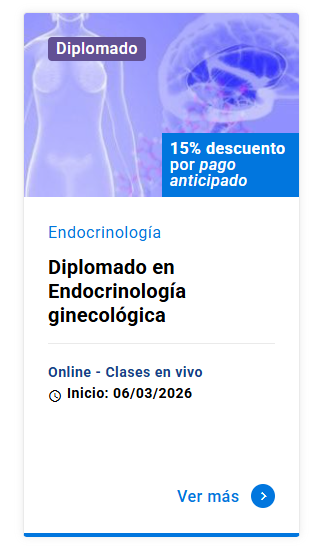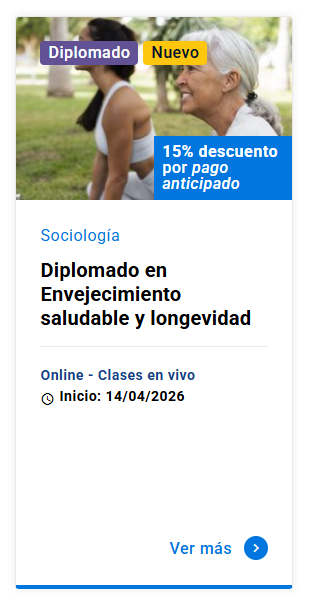Estilo de vida y agresividad del cáncer de próstata.
DOI:
https://doi.org/10.11565/arsmed.v43i2.1117Palabras clave:
tabaco, alcohol, encuesta., cáncer de próstataResumen
Introducción: el objetivo de este estudio fue establecer una asociación entre diversas variables demográficas y epidemiológicas con la agresividad del cáncer de próstata (CaP).
Métodos: pacientes diagnosticados con CaP respondieron una encuesta que incluye el nivel de educación, los factores de riesgo cardiovascular (FRCV), los antecedentes familiares (HF) de CaP, consumo de alcohol, tabaquismo y otros. Se utilizó análisis univariado y multivariado (AMV) para establecer si los factores mencionados anteriormente afectan las variables asociadas con la agresividad del CaP, como la edad al momento del diagnóstico, el índice de Gleason, los márgenes positivos (MP) y la metástasis óseas (MO), entre otras.
Resultados: se incluyeron ciento setenta y dos hombres en el análisis. Los pacientes con HF fueron diagnosticados a edades más tempranas que los pacientes sin HF (55,73 vs 66,45 años, p = 0,0001). Los pacientes que beben tienen un mayor número de MP que los pacientes que no (15 vs 4 pacientes, p = 0,04). El AMV mostró que los pacientes que consumen alcohol y los que fuman (activos o suspendidos) tuvieron un mayor riesgo de MP (OR = 4,45 y 4,1, IC 95% 1,16-17,07 y 1,14-14,72, respectivamente, ambos p <0,05). Los pacientes con mayor nivel de educación presentaron un mayor riesgo de CaP confinado (OR = 3,42, IC 95% 1,392-8,434, p = 0,007).
Conclusiones: los pacientes que consumen alcohol, fuman y tienen un menor nivel de educación presentaron un mayor riesgo de desarrollar CaP agresivo.
Descargas
Citas
Bunker CH., Becich MJ, Brufsky AM, Dhir R, Konety BR, Kuller LH, Patrick AL, Trump DL & Vivas CA. (2002). High prevalence of screening-detected prostate cancer among Afro-Caribbeans: the Tobago Prostate Cancer Survey. Cancer Epidemiology and Prevention Biomarkers 11, 726-729.
Burton AJ, Martin RM, Donovan JL, Lane JA, Davis M, Hamdy FC, Neal DE & Tilling K. (2012). Associations of lifestyle factors and anthropometric measures with repeat PSA levels during active surveillance/monitoring. Cancer Epidemiology and Prevention Biomarkers 21, 1877-1885. DOI: https://doi.org/10.1158/1055-9965.EPI-12-0411
Carter BS, Bova GS, Beaty TH, Steinberg GD, Childs B, Isaacs WB & Walsh PC. (1993). Hereditary prostate cancer: epidemiologic and clinical features. The Journal of urology 150, 797-802. DOI: https://doi.org/10.1016/S0022-5347(17)35617-3
Cerhan JR, Torner JC, Lynch CF, Rubenstein LM, Lemke JH, Cohen MB, Lubaroff DM & Wallace RB. (1997). Association of smoking, body mass, and physical activity with risk of prostate cancer in the Iowa 65+ Rural Health Study (United States). Cancer Causes & Control 8, 229-238. DOI: https://doi.org/10.1023/A:1018428531619
D'amico AV, Whittington R, Malkowicz SB, Schultz D, Blank K, Broderick GA, Tomaszewski JE, Renshaw AA, Kaplan I, Beard CJ & Wein A. (1998). Biochemical outcome after radical prostatectomy, external beam radiation therapy, or interstitial radiation therapy for clinically localized prostate cancer. Jama 280, 969-974. DOI: https://doi.org/10.1001/jama.280.11.969
Davis R, Rizwani W, Banerjee S, Kovacs M, Haura E, Coppola D & Chellappan S. (2009). Nicotine promotes tumor growth and metastasis in mouse models of lung cancer. PloS one 4 , e7524. DOI: https://doi.org/10.1371/journal.pone.0007524
Ferrís-I-Tortajada J, Berbel-Tornero O, Garcia-i-Castell J, López-Andreu JA, Sobrino-Najul, E & Ortega-García JA. (2011). Non-dietary environmental risk factors in prostate cancer. Actas Urológicas Españolas 35, 289-295. DOI: https://doi.org/10.1016/j.acuroe.2010.12.001
Fingerhut MA, Halperin WE, Marlow DA, Piacitelli LA, Honchar PA, Sweeney MH, Greife AL, Dill PA, Steenland K & Suruda AJ. (1991). Cancer mortality in workers exposed to 2, 3, 7, 8-tetrachlorodibenzo-p-dioxin. New England journal of medicine 324, 212-218. DOI: https://doi.org/10.1056/NEJM199101243240402
Gao X, LaValley MP & Tucker KL. (2005). Prospective studies of dairy product and calcium intakes and prostate cancer risk: a meta-analysis. Journal of the National Cancer Institute 97, 1768-1777. DOI: https://doi.org/10.1093/jnci/dji402
Giovannucci E, Rimm EB, Ascherio A, Colditz GA, Spiegelman D, Stampfer MJ & Willett WC. (1999). Smoking and risk of total and fatal prostate cancer in United States health professionals. Cancer Epidemiology and Prevention Biomarkers 8, 277-282.
Giovannucci E, Rimm EB, Liu Y, Leitzmann M, Wu K, Stampfer MJ, & Willett WC. (2003). Body mass index and risk of prostate cancer in US health professionals. Journal of the National Cancer Institute 95, 1240-1244. DOI: https://doi.org/10.1093/jnci/djg009
Giovannucci EL, Liu Y, Leitzmann MF, Stampfer MJ, & Willett WC. (2005). A prospective study of physical activity and incident and fatal prostate cancer. Archives of internal medicine 165, 1005-1010. DOI: https://doi.org/10.1001/archinte.165.9.1005
Haque R, Van Den Eeden SK, Wallner LP, Richert-Boe K, Kallakury B, Wang R & Weinmann S. (2014). Association of body mass index and prostate cancer mortality. Obesity research & clinical practice 8, e374-e381. DOI: https://doi.org/10.1016/j.orcp.2013.06.002
Hickey K, Do KA & Green A. (2001). Smoking and prostate cancer. Epidemiologic reviews 23, 115-125. DOI: https://doi.org/10.1093/oxfordjournals.epirev.a000776
Huncharek M, Haddock KS, Reid R & Kupelnick B. (2010). Smoking as a risk factor for prostate cancer: a meta-analysis of 24 prospective cohort studies. American journal of public health 100, 693-701. DOI: https://doi.org/10.2105/AJPH.2008.150508
Joshu CE, Mondul AM, Meinhold CL, Humphreys EB, Han M, Walsh PC & Platz EA. (2011). Cigarette smoking and prostate cancer recurrence after prostatectomy. Journal of the National Cancer Institute 103, 835-838. DOI: https://doi.org/10.1093/jnci/djr124
Kasibhatla M, Peterson B & Anscher MS. (2005). What is the best postoperative treatment for patients with pT3bN0M0 adenocarcinoma of the prostate? Prostate Cancer and Prostatic Diseases 8, 167-173. DOI: https://doi.org/10.1038/sj.pcan.4500789
Kenfield SA, Stampfer MJ, Chan JM, & Giovannucci E. (2011). Smoking and prostate cancer survival and recurrence. Jama 305, 2548-2555. DOI: https://doi.org/10.1001/jama.2011.879
Kenfield SA, Stampfer MJ, Giovannucci E, & Chan JM. (2011). Physical activity and survival after prostate cancer diagnosis in the health professionals follow-up study. Journal of Clinical Oncology 29, 726. DOI: https://doi.org/10.1200/JCO.2010.31.5226
Kudahetti S, Fisher G, Ambroisine L, Foster C, Reuter V, Eastham J, Møller H, Kattan MW, Cooper CS, Scardino P, Cuzick J & Cuzick J. (2009). p53 immunochemistry is an independent prognostic marker for outcome in conservatively treated prostate cancer. BJU international 104, 20-24. DOI: https://doi.org/10.1111/j.1464-410X.2009.08407.x
Li Y, Yang H, & Cao J. (2011). Association between alcohol consumption and cancers in the Chinese population—a systematic review and meta-analysis. PloS one 6, e18776. DOI: https://doi.org/10.1371/journal.pone.0018776
Lynch HT, Kosoko-Lasaki O, Leslie SW, Rendell M, Shaw T, Snyder C, D'Amico AV, Buxbaum S, Isaacs WB, Loeb S, Moul JW & Powell I. (2016). Screening for familial and hereditary prostate cancer. International Journal of Cancer 138, 2579-2591. DOI: https://doi.org/10.1002/ijc.29949
McGregor SE, Courneya KS, Kopciuk, KA, Tosevski C, & Friedenreich CM. (2013). Case–control study of lifetime alcohol intake and prostate cancer risk. Cancer Causes & Control, 24, 451-461. DOI: https://doi.org/10.1007/s10552-012-0131-7
Mehta H, Nazzal K & Sadikot RT. (2008). Cigarette smoking and innate immunity. Inflammation Research 57, 497-503. DOI: https://doi.org/10.1007/s00011-008-8078-6
Ministerio de Salud de Chile. (2012). Primer informe de registros poblacionales de cáncer de Chile. Quinquenio 2003-2007. Ministerio de salud. Gobierno de Chile, pp. 8-12. Accedido en https://www.paho.org/chi/index.php?option=com_docman&view=download&alias=174-informe-rpc-chile-2003-2007&category_slug=cancer&Itemid=1145 el 15 de septiembre de 2017.
Møller H, Roswall N, Van Hemelrijck M, Larsen SB, Cuzick J, Holmberg L, Overvad K & Tjønneland A. (2015). Prostate cancer incidence, clinical stage and survival in relation to obesity: a prospective cohort study in Denmark. International journal of cancer 136, 1940-1947. DOI: https://doi.org/10.1002/ijc.29238
Moreira DM, Antonelli JA, Presti JC, Aronson WJ, Terris MK, Kane CJ, Amling CL & Freedland SJ. (2010). Association of cigarette smoking with interval to biochemical recurrence after radical prostatectomy: results from the SEARCH database. Urology 76, 1218-1223. DOI: https://doi.org/10.1016/j.urology.2010.01.066
Moreira DM, Aronson WJ, Terris MK, Kane CJ, Amling CL, Cooperberg MR, Boffetta P & Freedland SJ. (2014). Cigarette smoking is associated with an increased risk of biochemical disease recurrence, metastasis, castrationâ€resistant prostate cancer, and mortality after radical prostatectomy. Cancer, 120, 197-204. DOI: https://doi.org/10.1002/cncr.28423
Novoa-Brunet C, Aliaga-de la Fuente A, Badilla-Ortega S, Reyes-Osorio D, Leyton-Naranjo R & Acuña-Madrid JI. (2013). Nivel educacional como determinante del inicio de controles prostáticos. En XXXV Congreso Chileno de Urología. La Serena. Chile. DOI: https://doi.org/10.4067/S0034-98872014000900007
Oefelein MG, & Resnick MI. (2004). Association of tobacco use with hormone refractory disease and survival of patients with prostate cancer. The Journal of urology 171, 2281-2284. DOI: https://doi.org/10.1097/01.ju.0000125123.46733.93
Park J, Cho SY, Lee SB, Son H. & Jeong H. (2014). Obesity is associated with higher risk of prostate cancer detection in a biopsy population in Korea. BJU international 114, 891-895. DOI: https://doi.org/10.1111/bju.12600
Platz EA. & Giovannucci E. (2006) Prostate Cancer. In Cancer Epidemiology and Prevention, pp 1128-503.a ed. Oxford. DOI: https://doi.org/10.1093/acprof:oso/9780195149616.003.0059
Rojas PA, Torres-Estay V, Cerda-Infante J, Montecinos VP, Domínguez J, Arenas J, Godoy AS, & San Francisco IF. (2014). Association of a single-nucleotide polymorphism from chromosome 17q12 with the aggressiveness of prostate cancer in a Hispanic population. Journal of cancer research and clinical oncology 140, 783-788. DOI: https://doi.org/10.1007/s00432-014-1635-1
San Francisco IF, Rojas PA, Torresâ€Estay V, Smalley S, Cerdaâ€Infante J, Montecinos VP, Hurtado C & Godoy AS. (2014). Association of RNASEL and 8q24 variants with the presence and aggressiveness of hereditary and sporadic prostate cancer in a Hispanic population. Journal of cellular and molecular medicine 18, 125-133. DOI: https://doi.org/10.1111/jcmm.12171
Sawada N, Inoue M, Iwasaki M, Sasazuki S, Yamaji T, Shimazu T, & Tsugane S. (2014). Alcohol and smoking and subsequent risk of prostate cancer in Japanese men: The Japan Public Health Centerâ€based prospective study. International journal of cancer 134, 971-978. DOI: https://doi.org/10.1002/ijc.28423
Siegel R, Ma J, Zou Z. & Jemal A. (2014). Cancer statistics, 2014. CA: a cancer journal for clinicians 64, 9-29. DOI: https://doi.org/10.3322/caac.21208
Sooriakumaran P, Dev HS, Skarecky D, & Ahlering T. (2016). The importance of surgical margins in prostate cancer. Journal of Surgical Oncology 113, 310-315. DOI: https://doi.org/10.1002/jso.24109
Steinberg GD, Carter BS, Beaty TH, Childs B & Walsh PC. (1990). Family history and the risk of prostate cancer. The prostate 17, 337-347. DOI: https://doi.org/10.1002/pros.2990170409
Stephenson AJ, Eggener S, Hernandez AV, Klein EA, Kattan, MW, Wood DP, Rabah D M, Eastham JA. & Scardino PT. (2014). Do Margins Matter? The Influence of Positive Surgical Margins on Prostate Cancer–Specific Mortality. European Urology 65, 675-680. DOI: https://doi.org/10.1016/j.eururo.2013.08.036
Waalkes MP & Rehm S. (1994). Cadmium and prostate cancer. Journal of Toxicology and Environmental Health, Part A Current Issues 43, 251-269. DOI: https://doi.org/10.1080/15287399409531920
Descargas
Publicado
Cómo citar
Licencia
Derechos de autor 2018 ARS MEDICA Revista de Ciencias Médicas

Esta obra está bajo una licencia internacional Creative Commons Atribución-CompartirIgual 4.0.
Los autores/as conservan sus derechos de autor y garantizan a la revista el derecho de primera publicación de su obra, la que estará simultáneamente sujeta a la Licencia CC BY-SA 4.0 (Ver declaración de Acceso Abierto).







